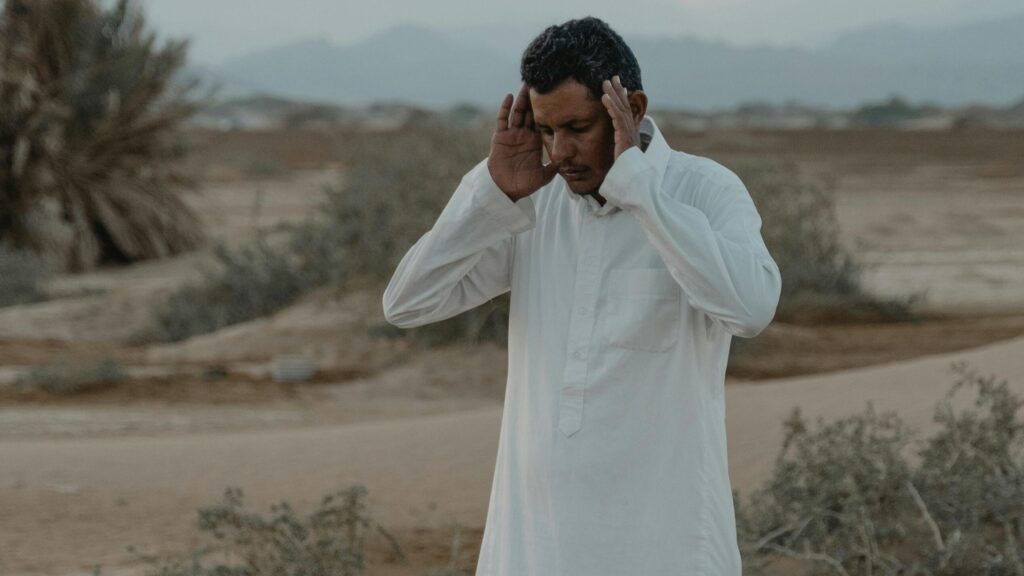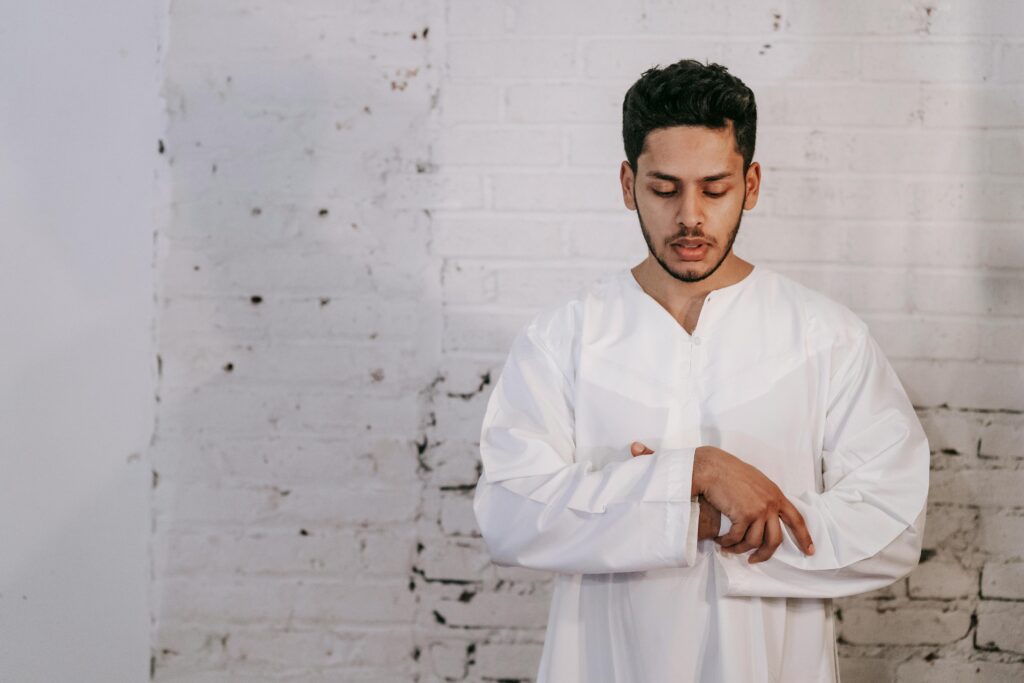Table of Contents
Introduction to Dua Qanoot
In the serene moments of night prayers, a special supplication known as Dua Qanoot reverberates through the hearts and mosques around the world. This prayer, deep in its meanings and profound in its implications, stands as a beacon of hope, guidance, and reliance on the Almighty. Dua-e-Qanoot, recited during the Witr prayer, is more than just a set of words; it’s an intimate conversation with Allah, a demonstration of complete trust and submission to His will.
The beauty of this dua lies in its universality and flexibility, allowing Muslims from diverse backgrounds to find solace and strength in its words. It embodies the essence of supplication – asking for guidance, seeking forgiveness, and expressing gratitude and devotion to Allah. This blog aims to unfold the beauty, significance, and application of Dua-e-Qanoot, offering readers a pathway to a deeper spiritual connection.
Origins and History
The tradition of Dua Qanoot is deeply rooted in Islamic history, traced back to the Prophet Muhammad (PBUH) who introduced this supplication during times of calamity and need. While the Quran does not explicitly mention Dua-e-Qanoot, the Hadith literature provides ample evidence of its significance and the circumstances under which it was recited by the Prophet. This historical backdrop highlights the dua’s role as a spiritual tool for seeking divine intervention and support.

The Importance of Dua Qanoot in Worship
Dua-e-Qanoot is pivotal in Islamic worship, particularly within the Witr prayer, a voluntary prayer performed after the Isha prayer. This supplication enriches the prayer experience, imbuing it with a profound sense of devotion, humility, and reliance on Allah. It’s a moment where the believer stands before their Creator, openly expressing their vulnerabilities, hopes, and gratitude, thereby strengthening their faith and spiritual resolve.
The Text of Dua Qanoot: Arabic, Pronunciation, and Translations
Dua-e-Qanoot weaves together praises, pleas, and declarations of faith in a powerful supplication. Below is the text in Arabic, followed by its pronunciation in English, and translations in English and Urdu to ensure its message is accessible to all.
Arabic Text
اَللَّهُمَّ اِنَّا نَسۡتَعِيۡنُكَ وَنَسۡتَغْفِرُكَ وَنُؤۡمِنُ بِكَ وَنَتَوَكَّلُ عَلَيۡكَ وَنُثۡنِىۡ عَلَيۡكَ ٱلۡخَيۡرَ وَنَشۡكُرُكَ وَلَا نَكۡفُرُكَ وَنَخۡلَعُ وَنَتۡرُكُ مَنۡ يَّفۡجُرُكَ. اَللَّهُمَّ اِيَّاكَ نَعۡبُدُ وَلَكَ نُصَلِّئ وَنَسۡجُدُ وَاِلَيۡكَ نَسۡعٰى ونَحۡفِدُ ونَرۡجُوۡا رَحۡمَتَكَ وَنَخۡشٰى عَذَابَكَ اِنَّ عَذَابَكَ بِالۡكُفَّارِ مُلۡحِقٌ
Pronunciation in English
Allahumma inna nasta’eenoka wa nastaghfiruka wa nu’minu bika wa natawakkalu ‘alaika wa nuthni ‘alaykal khayr wa nashkuruka wa la nakfuruka wa nakhla’u wa natruku man yafjuruk. Allahumma iyyaka na’budu wa laka nusalli wa nasjudu wa ilayka nas’aa wa nahfidu wa narjoo rahmataka wa nakhsha ‘adhabaka inna ‘adhabaka bil kuffari mulhiq.
English Translation
“O Allah, we seek Your aid and ask for Your forgiveness, and we believe in You and rely on You. We praise You for all the good, and we are grateful to You and do not deny You. We forsake and abandon those who disobey You. O Allah, You alone we worship, and to You we pray and prostrate, for Your sake we strive and hurry. We hope for Your mercy and fear Your punishment, for Your punishment will surely reach the disbelievers.”
Urdu Translation
اے اللہ، ہم تیری مدد طلب کرتے ہیں اور تجھ سے معافی مانگتے ہیں، اور ہم تجھ پر ایمان رکھتے ہیں اور تجھ پر بھروسہ کرتے ہیں۔ ہم تیری تعریف کرتے ہیں اور تجھ سے شکرگزار ہیں اور تجھے انکار نہیں کرتے۔ ہم ان لوگوں کو چھوڑ دیتے ہیں جو تیری نافرمانی کرتے ہیں۔ اے اللہ، تو ہی وہ ہے جس کی ہم عبادت کرتے ہیں، اور تیرے لیے ہم نماز پڑھتے ہیں اور سجدہ کرتے ہیں، اور تیری رحمت کی امید رکھتے ہیں اور تیرے عذاب سے ڈرتے ہیں، بیشک تیرا عذاب کافروں تک ضرور پہنچے گا۔
How and When to Recite Dua Qanoot
The beauty of Dua-e-Qanoot lies in its versatility and the personal connection it fosters between the believer and Allah. Traditionally, this dua is recited during the Witr prayer, which is performed after the Isha (night) prayer. However, its recitation is not limited to just the Witr prayer; it can be invoked in any of the daily prayers, especially in times of distress or need, reflecting a Muslim’s direct appeal to Allah for aid, guidance, and mercy.
Detailed Instructions on Recitation
- During Witr Prayer: In the last rak’ah (unit of prayer) of Witr, after rising from the bowing position (ruku), stand up straight and raise your hands in supplication.
- Recite Dua Qanoot: With sincerity and concentration, recite Dua-e-Qanoot. While there are different supplications taught by the Prophet Muhammad (PBUH), the one provided here encapsulates a powerful message of dependence on Allah.
- Personal Supplication: After reciting Dua-e-Qanoot, you may continue with personal supplications, asking Allah for your needs and desires. This personalizes your prayer, making it a profound spiritual experience.
Situations Outside of Prayer
Dua-e-Qanoot can also be recited outside of formal prayers, especially during moments of personal reflection or when facing challenges. It serves as a reminder of Allah’s omnipresence and the power of supplication in seeking His guidance and support.

Dua Qanoot and Its Relevance Today
In today’s fast-paced and often turbulent world, Dua-e-Qanoot resonates as a source of peace, hope, and strength. Its timeless appeal lies in its universal themes of seeking divine aid, forgiveness, guidance, and expressing unconditional trust and reliance on Allah. For many, this dua is a refuge, offering solace and a sense of direction in navigating life’s complexities.
Modern Challenges and Anxieties
In the context of modern challenges—be it personal struggles, societal injustices, or global crises—Dua Qanoot serves as a reminder of the believer’s ultimate reliance on Allah. It encourages a proactive stance of prayer, reflection, and action, guided by faith and trust in Allah’s wisdom and timing.
Darood Ibrahimi: A Heavenly Path to Unwavering Faith and Serenity
FAQ
What is Dua Qanoot?
Dua-e-Qanoot is a supplication recited during the Witr prayer in the latter part of the night. It is a prayer seeking Allah’s guidance, forgiveness, and protection, embodying the believer’s reliance and trust in Allah.
When should Dua Qanoot be recited?
While traditionally recited during the Witr prayer after Isha, Dua-e-Qanoot can be invoked in any of the daily prayers, especially in times of distress, need, or reflection.
Can Dua Qanoot be recited outside of prayer?
Yes, Dua Qanoot can be recited outside of formal prayers as a supplication during personal reflection or in times of need, highlighting its flexibility and the personal connection it fosters with Allah.
Is there a specific posture for reciting Dua Qanoot?
During prayer, Dua-e-Qanoot is typically recited standing with hands raised in supplication after rising from the bowing position. Outside of prayer, it can be recited in any posture of reflection and supplication.
How does reciting Dua Qanoot benefit a believer?
Reciting Dua-e-Qanoot strengthens the believer’s faith, fosters a deep sense of reliance on Allah, and provides comfort and guidance during times of hardship and uncertainty.

